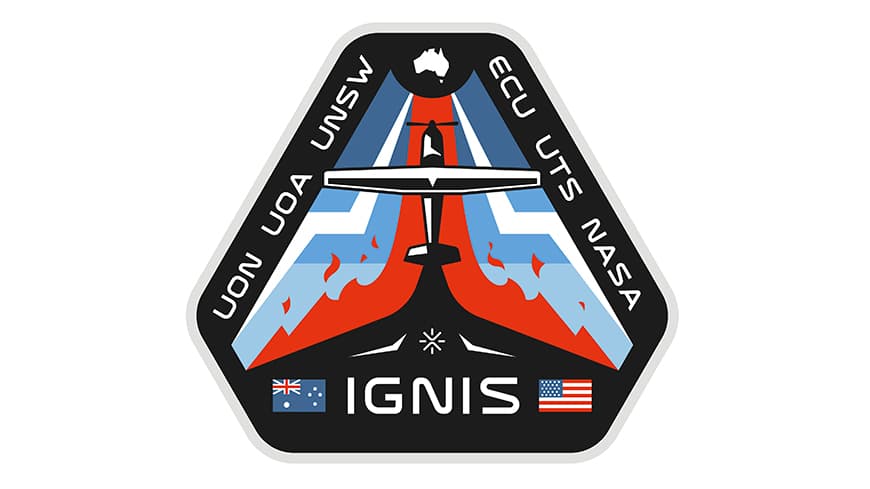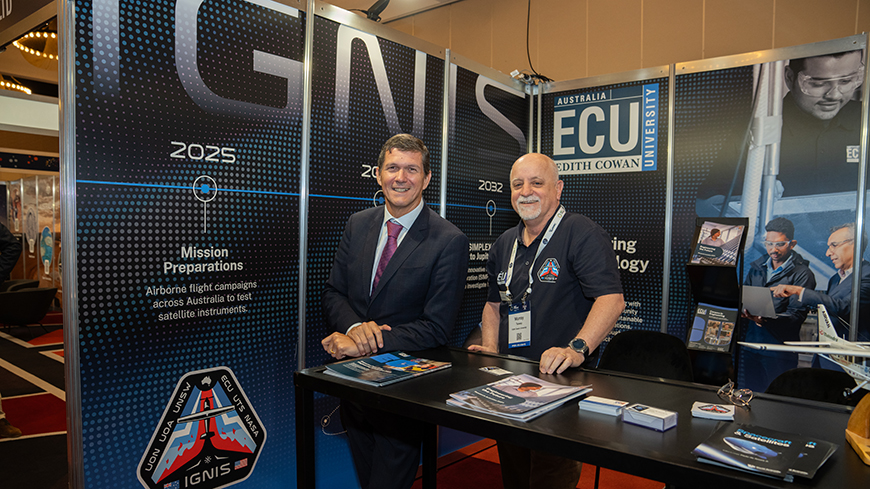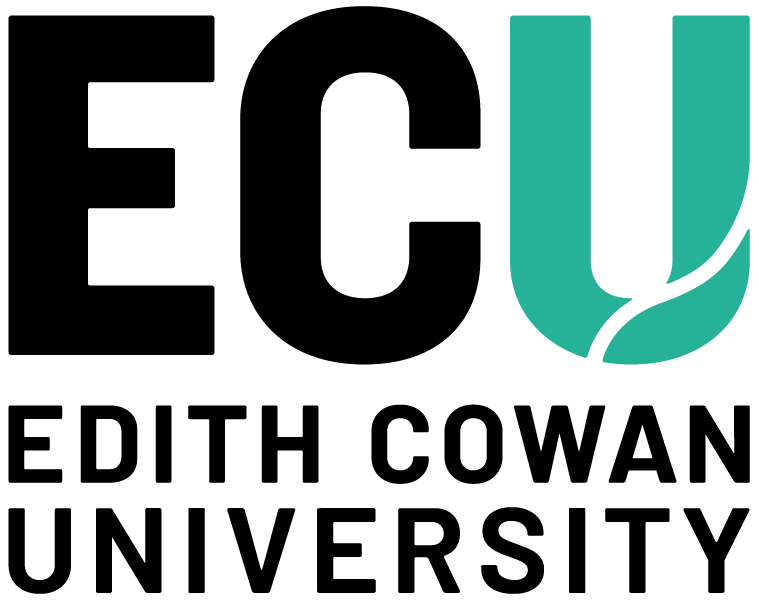Edith Cowan University (ECU), in collaboration with The University of New South Wales (UNSW), The University of Adelaide, University of Technology Sydney (UTS), University of Canberra, and The University of Newcastle will collaborate with NASA to study lightning events and fire from the ground, air and space.
 IGNIS means fire in Latin.
IGNIS means fire in Latin.
"We are using space technology to study thunderstorms, the lightning strikes that result in fires which in the Australian landscape can be devastating and deadly," ECU School of Engineering, Executive Dean, Professor Paulo de Souza said.
"This project is called IGNIS, which means fire in Latin and the research we develop will be relevant to scientists and our most vulnerable communities."
Professor Paulo de Souza, Principal Investigator of IGNIS, officially launched the project at the Indo-Pacific Space and Earth Conference held in Perth today.
Professor de Souza said the project will commence with flights over Western Australia's south west in December, to collect engineering data that will be used to better design the flights with NASA instruments for the 2025/26 summer season.
 Professor Paulo de Souza and ECU Aviation Lecturer Murray Terwey.
Professor Paulo de Souza and ECU Aviation Lecturer Murray Terwey.
In February ECU will deploy a ground network of lightning sensors.
"The lightning observations obtained with the ground system will be the first of its kind for southwestern Australia, providing an unprecedented 3-D view inside a thundercloud to reveal the origin of long-lasting lightning currents believed to ignite bushfires," NASA Marshall Space Flight Center, Patrick Gatlin said.
The IGNIS mission will be conducted over three stages, the first of which is the airborne survey of southwest Western Australia to map temperature signatures across the state, as well as lightning activities.
The aerial survey will be conducted through ECU's Aviation division, with assistance from private companies, including Xcalibur Aviation.
The airborne mission will be supported by 10 to 14 lightning ground stations deployed across eastern Australia, they are expected to be deployed in February 2025.
The ground network will be operated in collaboration with NASA's Marshall Space Flight Center. Later in the summer of 2024-25 this network will be complemented by a lightning sensor installed on an aircraft. These flight campaigns will also be supported by a thermal sensor developed by NASA's Goddard Space Flight Center.
"We want to expand the scientific team further by selecting researchers from other Universities to access the data and report on their discoveries. This follows the successful example of NASA with their Participating Scientist Program," Professor de Souza said.
The second stage of IGNIS would involve a launch of a 12U satellite to map and track thermal and lightning patterns from Low Earth Orbit, while the inspirational third stage would involve a deep-space mission, which is aimed at observing the interaction of solar activity and lightning on Jupiter and one of its moons called Io.
The aim of the deep space mission would be to use lightning as a means to understand the chemistry of that Planet.
 Professor de Souza said the team is set to expand over the next 12 months.
Professor de Souza said the team is set to expand over the next 12 months.
"The amount of energy released during electric storms is considerable. You have electrons flying everywhere and radiation being emitted, and that radiation is a fingerprint of the chemicals that are present in their environment. Considering the complexity of this mission, we will certainly require to expand the current team capability," Professor de Souza said.
"So, we can use lightning as a way to conduct chemical analysis at a distance, and to better understand the interaction of solar activity with electric storms and with planets."
"Australia has a long journey to become a major player in Space exploration. However, it is projects like IGNIS that are building the knowledge and research for Australia’s space research ecosystem, with strong support from our partners at NASA," Professor de Souza added.
Fighting climate change and predicting fire behaviour
The project also involves the Bureau of Meteorology (BOM), and the Department of Fire and Emergency Services (DFES) and the Civil Aviation Authority (CASA).
Comments attributable to The University of New South Wales (UNSW):
"Many of Australia's most devastating bushfires are caused by lightning in remote areas, but the complexity of dry lightning strikes and bushfire ignition is still not well understood. UNSW expertise in bushfire modelling and the application of AI/ML to this mission will enhance our ability to predict extreme bushfire threats to our communities," Jason Sharples, Ed Kruzins, Melrose Brown, from UNSW in Canberra.
Comments attributable to The University of Adelaide:
"This initiative is significant and will represent NASA's first ever joint mission with Australia," ARC Australian Laureate Prof. Derek Abbott, University of Adelaide.
Comments attributable to University of Technology Sydney (UTS):
"Space is an increasingly important capability for advanced nations to support their way of life. It's now critical for understanding how our world works and providing the services necessary for sustainable high standards of living. We are proud to support the IGNIS initiative with NASA and the other universities involved via our world class researchers and Tech Lab facility in Botany," Professor Peta Wyeth, Dean, Faculty of Engineering and IT, University of Technology Sydney.

 ECU will collaborate with NASA to study lightning and fire from space.
ECU will collaborate with NASA to study lightning and fire from space.



